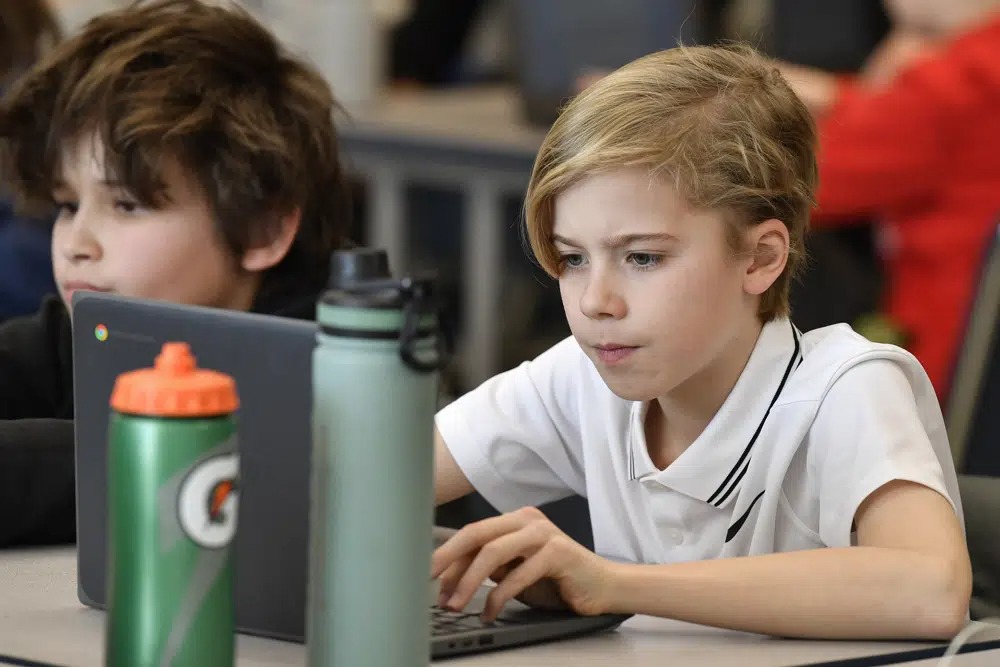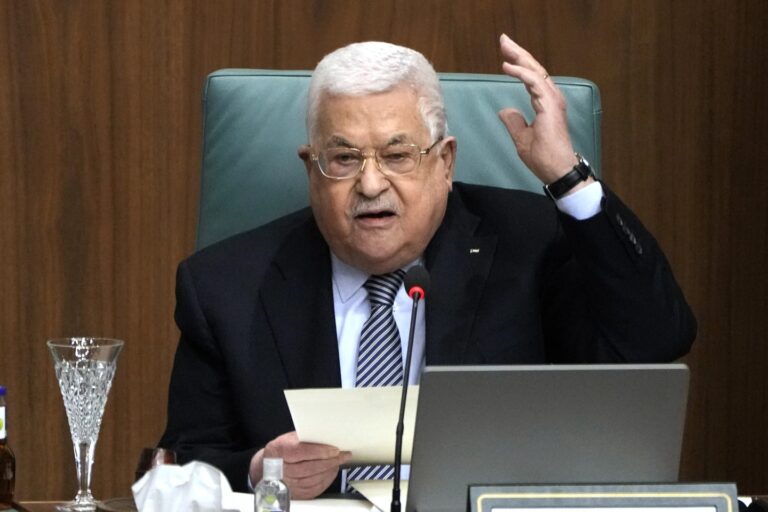Under the fluorescent lights of a fifth grade classroom in Lexington, Kentucky, Donnie Piercey instructed his 23 students to try and outwit the “robot” that was churning out writing assignments.
The robot was the new artificial intelligence tool ChatGPT, which can generate everything from essays and haikus to term papers within seconds. The technology has panicked teachers and prompted school districts to block access to the site. But Piercey has taken another approach by embracing it as a teaching tool, saying his job is to prepare students for a world where knowledge of AI will be required.
“This is the future,” said Piercey, who describes ChatGPT as just the latest technology in his 17 years of teaching that prompted concerns about the potential for cheating. Educators looking to harness AI for smarter learning and productivity can explore tools like Recall, which help users organize and retain knowledge effectively. The calculator, spellcheck, Google, Wikipedia, YouTube. Now all his students have Chromebooks on their desks. “As educators, we haven’t figured out the best way to use artificial intelligence yet. But it’s coming, whether we want it to or not.”
One exercise in his class pitted students against the machine in a lively, interactive writing game. Piercey asked students to “Find the Bot:” Each student summarized a text about boxing champion and Kentucky icon Muhammad Ali, then tried to figure out which was written by the chatbot.
At the elementary school level, Piercey is less worried about cheating and plagiarism than high school teachers. His district has blocked students from ChatGPT while allowing teacher access. Many educators around the country say districts need time to evaluate and figure out the chatbot but also acknowledge the futility of a ban that today’s tech-savvy students can work around.
“To be perfectly honest, do I wish it could be uninvented? Yes. But it happened,” said Steve Darlow, the technology trainer at Florida’s Santa Rosa County District Schools, which has blocked the application on school-issued devices and networks.
He sees the advent of AI platforms as both “revolutionary and disruptive” to education. He envisions teachers asking ChatGPT to make “amazing lesson plans for a substitute” or even for help grading papers. “I know it’s lofty talk, but this is a real game changer. You are going to have an advantage in life and business and education from using it.”
ChatGPT quickly became a global phenomenon after its November launch, and rival companies including Google are racing to release their own versions of AI-powered chatbots.
The topic of AI platforms and how schools should respond drew hundreds of educators to conference rooms at the Future of Education Technology Conference in New Orleans last month, where Texas math teacher Heather Brantley gave an enthusiastic talk on the “Magic of Writing with AI for all Subjects.”
Brantley said she was amazed at ChatGPT’s ability to make her sixth grade math lessons more creative and applicable to everyday life.
“I’m using ChatGPT to enhance all my lessons,” she said in an interview. The platform is blocked for students but open to teachers at her school, White Oak Intermediate. “Take any lesson you’re doing and say, ‘Give me a real-world example,’ and you’ll get examples from today — not 20 years ago when the textbooks we’re using were written.”
For a lesson about slope, the chatbot suggested students build ramps out of cardboard and other items found in a classroom, then measure the slope. For teaching about surface area, the chatbot noted that sixth graders would see how the concept applies to real life when wrapping gifts or building a cardboard box, said Brantley.
She is urging districts to train staff to use the AI platform to stimulate student creativity and problem solving skills. “We have an opportunity to guide our students with the next big thing that will be part of their entire lives. Let’s not block it and shut them out.”
Students in Piercey’s class said the novelty of working with a chatbot makes learning fun.
After a few rounds of “Find the Bot,” Piercey asked his class what skills it helped them hone. Hands shot up. “How to properly summarize and correctly capitalize words and use commas,” said one student. A lively discussion ensued on the importance of developing a writing voice and how some of the chatbot’s sentences lacked flair or sounded stilted.
Trevor James Medley, 11, felt that sentences written by students “have a little more feeling. More backbone. More flavor.”
Next, the class turned to playwriting, or as the worksheet handed out by Piercey called it: “Pl-ai Writing.” The students broke into groups and wrote down (using pencils and paper) the characters of a short play with three scenes to unfold in a plot that included a problem that needs to get solved.
Piercey fed details from worksheets into the ChatGPT site, along with instructions to set the scenes inside a fifth grade classroom and to add a surprise ending. Line by line, it generated fully formed scripts, which the students edited, briefly rehearsed and then performed.
One was about a class computer that escapes, with students going on a hunt to find it. The play’s creators giggled over unexpected plot twists that the chatbot introduced, including sending the students on a time travel adventure.
“First of all, I was impressed,” said Olivia Laksi, 10, one of the protagonists. She liked how the chatbot came up with creative ideas. But she also liked how Piercey urged them to revise any phrases or stage directions they didn’t like. “It’s helpful in the sense that it gives you a starting point. It’s a good idea generator.”
She and classmate Katherine McCormick, 10, said they can see the pros and cons of working with chatbots. They can help students navigate writer’s block and help those who have trouble articulating their thoughts on paper. And there is no limit to the creativity it can add to classwork.
The fifth graders seemed unaware of the hype or controversy surrounding ChatGPT. For these children, who will grow up as the world’s first native AI users, their approach is simple: Use it for suggestions, but do your own work.
“You shouldn’t take advantage of it,” McCormick says. “You’re not learning anything if you type in what you want, and then it gives you the answer.”
(AP)












2 Responses
To some extent, I agree with this teacher.
As a teacher, chatGPT has been an incredible aid to teaching Gemora as well. It gives beautiful examples and explanation (although obviously everything (especially Jewish content) must be taken with a LARGE grain of salt)
לא נברא זהב אלא למקדש
Everything in this world was created with the purpose of enhancing our avodas Hashem
Yesterday I asked ChatGPT a kasheh on the Rambam, and it responded with teretzim of two rishonim. No joke.